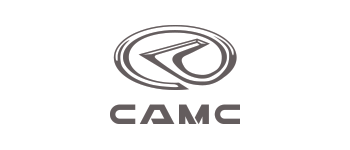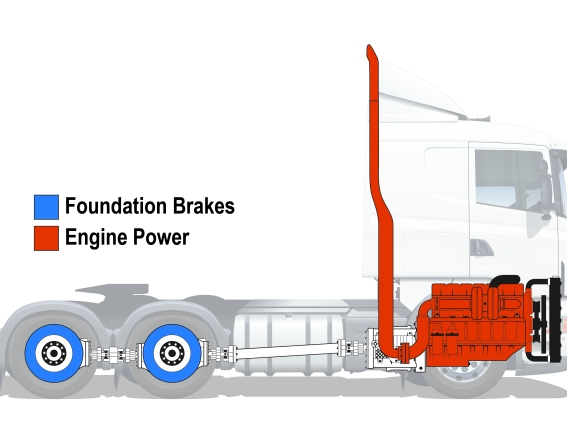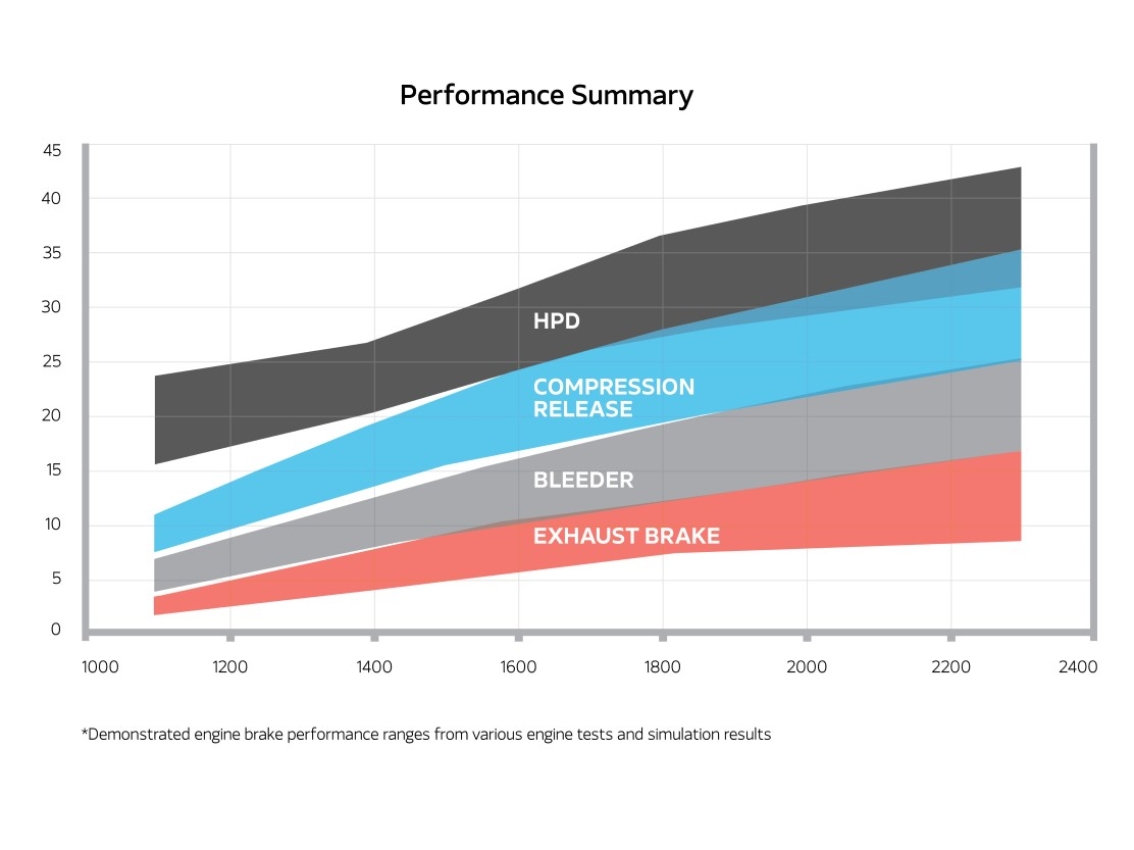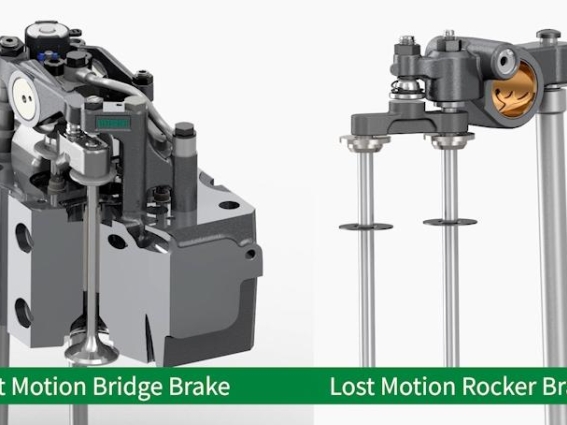The Jacobs Engine Brake® is an engine retarder that uses the engine to aid in slowing and controlling the vehicle. When activated, the engine brake alters the operation of the engine’s exhaust valves so that the engine works as a power-absorbing air compressor. This provides a retarding, or slowing, action to the vehicle’s drive wheels, enabling you to have improved vehicle control without using the service brakes. This conservation significantly reduces brake wear and results in decreased service brake maintenance, shorter trip times and lower total cost of ownership.
- Provides 85% of the vehicle’s braking needs
- Increases productivity by maintaining higher average downhill speed
- Reduces slowing time/distances of a heavily loaded vehicle from 90 to 70 kph in 30% less time and distance than with wheel brakes alone
- Lowers total cost of ownership
- Significantly reduces brake wear
- Eliminates “brake fade” due to high temperatures on the friction brakes; keeping them cool for maximum effectiveness when needed
- Flexible solution available for your application
When activated, when the engine is not fueling:
- The Jacobs Compression Release Brake opens the exhaust valves near the top of the compression stroke
- With the valves open, highly compressed air is released through the exhaust system
- The vehicle energy is used to push the engine to compress the air, but little energy is returned to the piston
- As the cycle repeats, the energy of the truck’s forward motion is dissipated, causing the truck to slow down
A variety of compression release engine brakes are available to meet the needs of your application. Whether your constraints are around packaging or cost, there is a solution available for your engine.
Dedicated Cam Rocker Brake
The benchmark for all heavy duty engine brake systems.
Lost Motion Bridge Brake
Engine brake function is integrated into the exhaust bridge.
Lost Motion Integrated Rocker Brake
Engine brake and exhaust function integrated into one rocker arm.
Bolt-on Slab Brake
Traditional solution with minimal or no impact to the standard valvetrain.
High Power Density
A combination of engine braking and cylinder deactivation to achieve higher retarding power.
Lost Motion technology provides a cost-effective solution for engines where packaging is restricted. It is ideal for medium- and heavy-duty applications where the overhead cannot accommodate a dedicated cam braking system.
Engine-specific solutions for leading OEMs

6D10
10L
12L

C10
C12
C15
C16
3406

X15 / ISX15 / ISX
ISX12
ISX12N / ISX12 G
ISM / M11
L9 / ISL9 / ISL
ISZ

MX-11
MX-13

OM470
DD13 / OM471
DD15 / OM472
DD16 / OM473

DD13
DD15
DD16
S60
S50

dCi 11

DV11

Ecotorq 13

6R10
6R20
6M61

E13C
A05C
A09C
U11C

D13

Powertec (L)
H

A26
DT466
DT530 / 570
N9
N10
N11
N13

6UZ1
6NX1

Series 53
Series 71 / 92

MX-11
MX-13

10L / 12L

WP 9H / 10H
WP 11H
WP 13H
WP 15H

K5/K8
K9/K11
K12
K13




